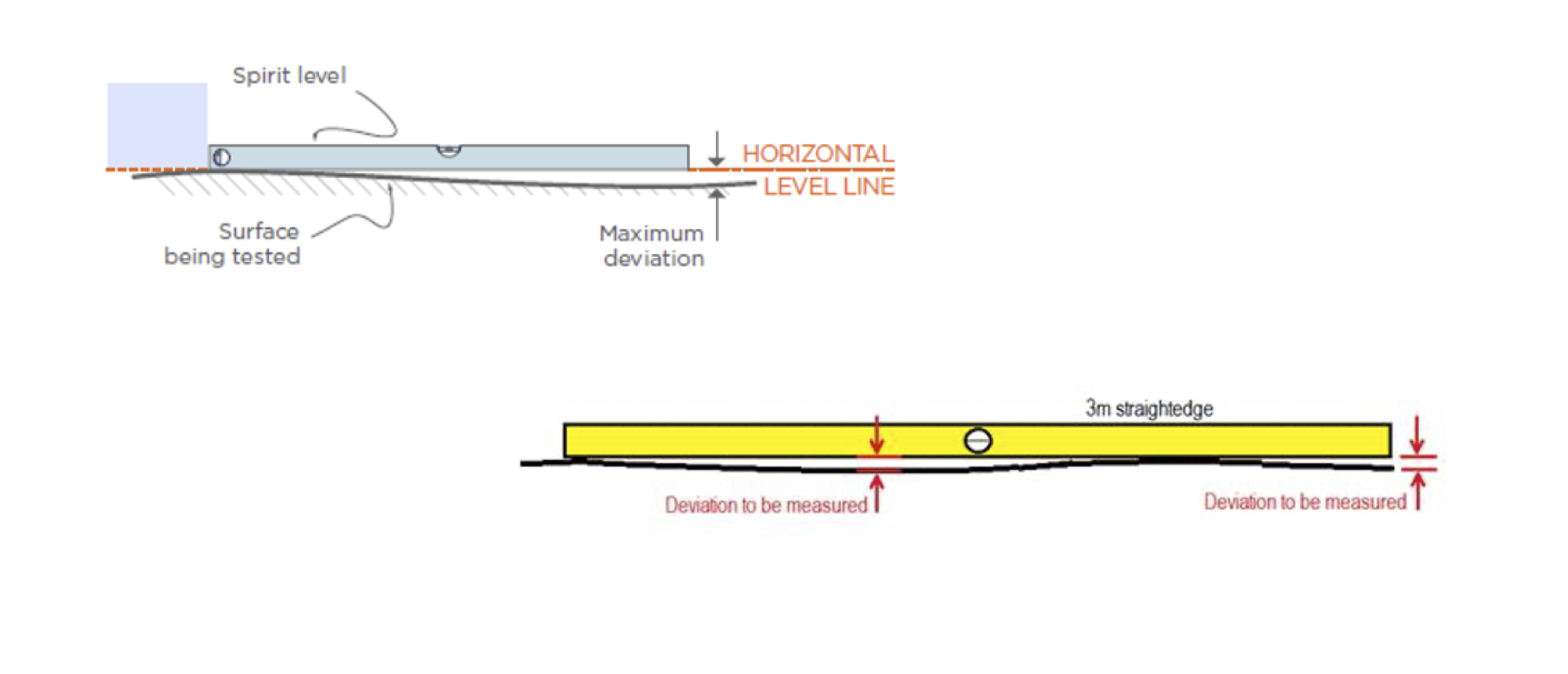Despite all appropriate efforts by trades involved in preparing a concrete slab, QTF is regularly confronted with a concrete slab that is simply unsuitable for a timber floor, without some additional effort. That normally means grinding or application of levelling compounds and sometimes both. And that means additional cost and time delays to the build.
The largest percentage of timber flooring is glued (as well as nailed in many instances also), so timber flooring installers rely heavily on the quality and competency of the glues that they use. Glue suppliers, whilst varying somewhat across their product ranges, do agree on one thing: a concrete subfloor must be flat and dry for their products to work as designed. The common standard for flatness is 3mm variation over 3m, and this is what QTF requires prior to installation of a timber floor over concrete. This is important not only for the finishing trades, but also for the wall framers and anyone else that benefits from a flat surface upon which to work.
Our opinion, based on decades of timber floor installations, is that a robust discussion with the concrete supplier (most of whom are more than capable of laying a suitable slab) at the start of the project is an essential step! Costs and timings can then be determined and built into the project at the quoting stage, rather than as a potentially difficult variation later.
There are some excellent guides available (see below). The Australasian Timber Flooring Association’s Timber Flooring Applications Guide is the closest to a standard that is available. QBCC and CCAA (Cement, Concrete & Aggregates Australia) also have some useful guides.
https://www.floorchoices.com.au/wp-content/uploads/2018/05/TFASML.pdf
https://www.qbcc.qld.gov.au/sites/default/files/Standards_and_Tolerances_Guide_0.pdf
https://www.ccaa.com.au/imis_prod/documents/DATA_SHEET_TOLERANCE_FOR_CONCRETE_SURFACES.pdf

